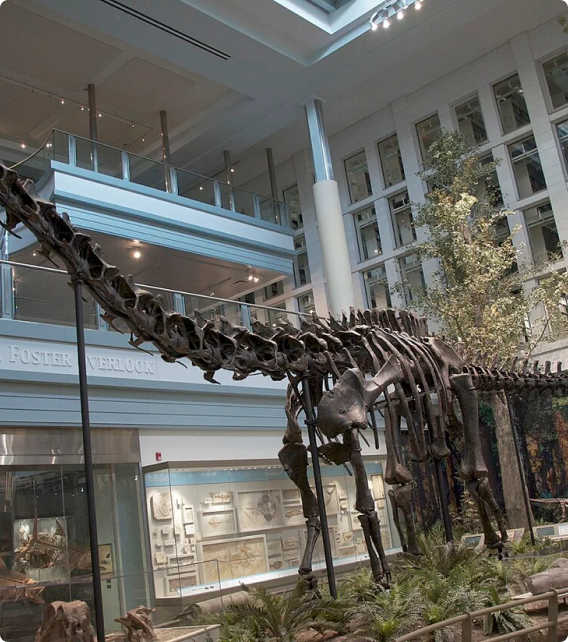The Carnegie Museum of Natural History obtained its iconic Diplodocus fossil, affectionately known as "Dippy," through the efforts of its founder, Andrew Carnegie. In the early 20th century, Carnegie was an influential philanthropist with a deep interest in science and education. In 1899, the museum's director, William Jacob Holland, contacted the renowned paleontologist John Bell Hatcher, who was working in the western United States. With Carnegie's financial backing, Hatcher and his team embarked on an expedition to Wyoming, where they discovered the nearly complete skeleton of a Diplodocus Carnegii dinosaur in 1899. The fossil was carefully excavated, prepared, and transported to the museum in Pittsburgh.
It was unveiled to the public in 1907, becoming one of the first dinosaur skeletons ever displayed in such a manner. Andrew Carnegie's vision and commitment to advancing science education through his philanthropy led to the acquisition of this remarkable fossil, which continues to inspire and educate visitors at the Carnegie Museum of Natural History to this day.
PA Virtual's comprehensive curriculum introduces fun science facts and trips to places like Carnegie Museum of Natural History as early as elementary school. As with all of our educational endeavors, we ensure that our students are learning about engaging content that will challenge them and foster genuine passion and interest. Stay tuned for more of our monthly lessons in the upcoming year.
Watch the video below to find out more!
Extra Credit
Partnering with the Carnegie Museum of Natural History, we’re offering an enriched educational experience to animate our exhibits. Whether you've scanned this at the museum or found us online, dive deeper into this month's topic and be sure to visit in person for the full experience.





